MBA Knowledge Base
Business • Management • Technology
Home » Management Case Studies » Case Study: Zara’s Supply Chain Success Story

Case Study: Zara’s Supply Chain Success Story
Zara is a Spanish fashion clothing manufacturer and retailer, formed in the 1970’s It is known that only two weeks are required for Zara to complete the development and shipment of a new product to its stores , which outweighs the average of fashion industry of six months, thanks to the collaborative relationship with customers and suppliers. Zara mainly targets on young and urban female customers and acceptable prices are offered. There are always new products in Zara stores. Even though usually Zara stores are spacious but the stock is displayed in limited quantity. This kind of strategy gives customers a sense of originality and exclusivity. Most of the stores display clothes only when they have a full set of major sizes, so customers would not be upset to find out that the needed size is not available. As shoppers enter the stores, reaction between Zara and customers starts with creating a sense of “buy now since you won’t see it next time” because of the rapid turnover environment. Customer relationship between Zara and shoppers is then strengthened by, instead of offering VIP services and discounts, showing a sense of scarcity by displaying unfilled shelves, limited offer notes on certain items and deliberate undersupply impression to encourage customers to run to the counter.

Such a retail concept depends on the regular creation and rapid replenishment of small batches of new goods. Zara’s designers create approximately 40,000 new designs annually, from which 10,000 are selected for production. Some of the goods are high fashion looks-alike, but much cheaper and lower quality and that in many cases allow Zara to beat high fashion designers in sales and profit amounts.
Zara is not a world leader in cloth designs, but it is a high sensitive and flexible fashion trend follower. Zara has design staffs that glen fashion inspiration by interaction with potential customers from competitors’ stores, clubs, fashion shows, university campuses and any other events or venues related to the lifestyles of the target customers. Zara’s networked business designs enable the frequent digital communication from stores to designers, and centralized distribution allow the within-15-day deliveries to ensure the satisfaction of consumers, comparing with the average length of 9 months for the competitors.
Zara’s Supply Chain
Zara’s single, centralized design and production center is attached to Inditex (Zara’s parent company). Inditex Chief Executive Jose Maria Castellano says, “This business is all about reducing response time. In fashion, stock is like food, it goes bad quick.” To maintain a healthy reaction with customers, keeping up with fashion has become one of the main strategies of Zara.
In the first half of the 1990s, Zara’s supply chain consisted of problems of inconsistency, imbalances and market saturation for three of the store chains of Zara, plus the inefficient launch of fashion position had created difficulties in joining the U.S. garments market. It has suffered from a significant financial loss in 2001 and a dramatic decrements in the share price. In May of the following year, the chairman, who failed to reposition to a more fashionable assortment due to a major fashion missing, had withdrawn from his long-term CEO position. The supply chain was restructured in 1990s by lowering the levels of inventories and reducing the number of suppliers. 50% of the production was then shifted back to the domestic manufacturing facilities to compress cycle times, seasonal collections were cut down in order to allow reorders of well selling products in a season’s 3rd month.
Market-driven supply chain (linking customer value to supply chain strategy ) was then applied instead of the traditional supply chain which only designed to optimize the internal operations. The company uses “value net” business design to support the networked operation in order to allow connect customers with the company and its key suppliers. Zara’s “value net” includes: digital customer input provided by Zara stores , Zara designers’ sketch pads of the required styles, globally sourced textiles , hi-tech cutting plant and local workshops sewing/assembly, single distribution system. Based on the “value net”, customer value management is a key issue to obtain a regular group of buyers. Opportunities from current and potential customers can be created by understanding the customers’ hobbies, purchase frequency, behaviors and needs. Further actions hence can be taken including contacts of multi-channel customers and campaigns promotional targeting , offers designed to attract and serve different customers according on their potential and existing values. The current shoppers are frequent and loyal customers who visit 17 times on average to a Zara store per year. Their interest is retained by regularly updating and varying of stocks on shelves.
The design and production center consists of three halls – men’s, women’s, children’s. Unlike most of the companies, especially after Global Finance Crisis has started, which try to reduce labor costs, Zara makes a point of running three parallel, but operationally distinct, product families. Separate sales, production planning , design staffs are responsible for each clothing (men, women, children) line. Any Zara store may receive three different calls from centralized headquarter in one week from a market specialist in each channel, a factory making shirts may deal simultaneously with two Zara managers, one for men’s shirts and another for children’s shirts. Even though it’s more expensive to operate three different and separate channels, the information stream from management to each separate channel is direct, fast and not disturbed by problems of other channels which makes the overall supply chain more responsive. This sort of physical and organisational proximity of all three channels allows increasing productivity , the speed of new customer desired designs and the whole design process and the quality of that process. Zara’s drafting machines can produce a corresponding style or modification to specific requests within 2 to 4 weeks after a requirement is placed and samples would be released shortly throughout varies of medias and further manufacturing may be proceeded upon to the market reactions.
This “fast fashion” system depends on a constant exchange of information throughout every part of Zara’s supply chain – from customers to store managers, from store managers to market specialists and designers, from designers to production staff, from buyers to subcontractors, from warehouse managers to distributors. Zara’s organisation, performance measures, operational procedures are designed to make information transfer easy.
Efficient communication between the company and suppliers is essential in order to reduce production cost and quality maintenance. Comparing with Zara’s competitor United Colors of Benetton which uses Asian resources, about 40% of Zara’s merchandise are internally manufactured, 66% of raw materials are imported from Europe and north Africa, and only a small amount of basic items (items with the broadest and least transient appeal) are outsourced from Asia. The global sourced strategy provides a large range of possible selection of fashion fabrics and reduces the dependence on any particular suppliers. More than half of the material is purchased in gray color and is dyed in one of Inditex’s facilities. Only one week is required for this process to complete which shows the benefit of proximity and domestic control.
Domestic production incurs extra cost of approximately 20% comparing if the garments were produced in Asia, yet Zara does not really suffer from it due to the efficient operation with the Europe manufacturer. The suppliers provide Zara flexibility to postpone the printing and dyeing procedures to adapt product lines according to updated market fashion trend. Holding inventories costs are reduced as well because orders do not have to be placed for a season in advance and kept in the storerooms before the periodic shipment arrives and Zara is able to react and respond quickly to changes of customer demands which also reduces the risk when final demand gets amplified as they are fulfilled quickly by transferring new designs to the supply line.
One of the biggest advantages of Zara’s supply chain strategy is being able to react quickly to all fashion trends and supply customers latest fashion outfits as soon as in few weeks’ time. Secondly, Zara never makes its production in big quantities, so if the style does not sell as good as expected, Zara does not lose much as there is not much stock to be discounted. Thirdly, though Zara’s supply chain has higher cost but it allows the advantage of low inventory and higher profit margins. The positive effects associated with the vertically integrated, shortened supply chain are obvious: Zara’s advertising fee is only 0.3% of its revenue whereas the other similar fashion retailers normally spend 3% for advertisements and marketing purposes. The short cycle time requires less working intensive of new merchandise and allows Zara committing to the bulk of production line for a season later than the peers. The high frequent of shifts of displayed merchandise (about three quarters of them are changed every 3 weeks) allows regular customer-visit rates to be maintained. The biggest disadvantage of Zara’s supply chain is that since Zara owned all the channels of supply chain , it becomes difficult to expand to far location as it is very expensive to distribute such products.
Related Posts:
- Case Study: An Assessment of Wal-Mart's Global Expansion Strategy
- Case Study: Wal-Marts Competitive Advantage
- Zara's Lean Operation: Source of Competitive Advantage
- Case Study: Tesco's US Grocery Market Entry
- Case Study of Zara: Use of Technology to Improve Operational Responsiveness
- Case Study of Kishore Biyani: India's Retail King
- Case Study on Information Systems: Integrated Customer Ordering Service at Marks & Spencer
- Case Study of Dell: Primary Target Markets and Positioning Strategy
- Case Study of Avon: From Direct Selling to Direct Marketing
- Case Study: Inventory Management Practices at Walmart
Leave a Reply Cancel reply
Your email address will not be published. Required fields are marked *
- Skip to primary navigation
- Skip to main content
- Skip to primary sidebar
- Skip to footer

Supply Chain Management Design & Simulation Online
Zara Clothing Company Supply Chain
January 4, 2020 By mhugos
CASE STUDY CONCEPT: The Zara supply chain drives its successful business model. Run simulations of the Zara supply chain to see how it works, and how to improve it.
Zara changes its clothing designs every two weeks on average, while competitors change their designs every two or three months. It carries about 11,000 distinct items per year in thousands of stores worldwide compared to competitors that carry 2,000 to 4,000 items per year in their stores. Zara’s highly responsive supply chain is central to its business success. The heart of the Zara supply chain is a huge, highly automated distribution center (DC) called “The Cube”. The screenshot below shows a closeup satellite view of this facility.

The company was founded in Spain in 1974 by Amancio Ortega and his wife Rosalía Mera. It is the flagship business unit of a holding company called Inditex Corporation with headquarters in Arteixo, Galicia, a city in northwestern Spain near where Mr. Ortega was born. In 2020 Zara was ranked as the 41st most valuable brand in the world by Forbes (see bibliography below).
NOTE: This is an advanced case . Work through the three challenges of the beginning case, “ Cincinnati Seasonings ” before taking on the challenges in this case.
[ Instructors, students and professionals can request a free SCM Globe trial demo ]
Company Business Model
Agents for the company are always scouting out new fashion trends at clubs and social gatherings. When they see inspiring examples they quickly send design sketches to the garment designers at the Cube. New items can be designed and out to the stores in 4 – 6 weeks, and existing items can be modified in 2 weeks.
The company’s core market is women 24 – 35 years old. They reach this market by locating their stores in town centers and places with high concentrations of women in this age range. Short production runs create scarcity of given designs and that generates a sense of urgency and reason to buy while supplies last. As a consequence, Zara does not have lots of excess inventory, nor does it need to do big mark-downs on its clothing items.
Zara has 12 inventory turns per year compared to 3 – 4 per year for competitors. Stores place orders twice a week and this drives factory scheduling. Such short term focused order cycles make forecasts very accurate, much more accurate than competitors who may order every two weeks or every month.
Clothing items are priced based on market demand, not on cost of manufacture. The short lead times for delivery of unique fashion items combined with short production runs enable Zara to offer customers more styles and choices, and yet still create a sense of urgency to buy because items often sell out quickly. And that particular item or style may not be available again after it sells out. Zara sells 85 percent of its items at full price compared to the industry average of selling only 60 percent of items at full price. Annually there is 10 percent of inventory unsold compared to industry averages of 17 – 20 percent.
In Spain customers visit Zara stores 17 times per year on average compared to 3 times per year for competitors. Because their clothing designs change often, it is harder for people to see them clearly online. So they are encouraged to come into the stores instead and try on the unique fashions that Zara offers (screenshot below shows people at a Zara store in Madrid, Spain).

Zara spends its money on opening and growing its stores instead of spending a lot on ad campaigns. Estimates vary on the number of Zara stores worldwide. An article in the New York Times Magazine (November 2012, “ How Zara Grew into the World’s Largest Fashion Retailer “), placed the store count at around 5,900. An article in Forbes simply states there are “more nearly 3,000 stores” (2020, “ The World’s Most Valuable Brands – #41 Zara “). Annual sales for 2019 were estimated by Forbes to be $21.9 billion . The holding company, Inditex SA, is a public company and Inditex provides annual statements , but it does not break out Zara sales from sales of the other brands owned by Inditex (Pull&Bear, Massimo Dutti, Bershka, Stradivarius, Oysho, Zara Home, and Uterqüe). Zara uses a flexible business model where its stores can be owned, franchised, or co-owned with partners. So it is not always possible to find exact numbers for Zara’s business operations and finances.
Manufacturing and Supply Chain Operations Make Zara Unique
Zara buys large quantities of only a few types of fabric (just four or five types, but they can change from year to year), and does the garment design and related cutting and dyeing in-house. This way fabric manufacturers can make quick deliveries of bulk quantities of fabric directly to the Zara DC – the Cube. The company purchases raw fabric from suppliers in Italy, Spain, Portugal and Greece. And those suppliers deliver within 5 days of orders being placed. Inbound logistics from suppliers are mostly by truck.
The Cube is 464,500 square meters (5 million square feet), and highly automated with underground monorail links to 11 Zara-owned clothing factories within a 16 km (10 mile ) radius of the Cube. All raw materials pass through the Cube on their way to the clothing factories, and all finished goods also pass through on their way out to the stores. The diagram below illustrates Zara’s supply chain model.

Zara’s factories can quickly increase and decrease production rates, so there is less inventory in the supply chain and less need to finance that inventory with working capital. They do only 50 – 60 percent of their manufacturing in advance versus the 80 – 90 percent done by competitors. Zara does not need to place big bets on yearly fashion trends. They can make many smaller bets on short term trends that are easier to call correctly.
The Zara factories are connected to the Cube by underground tunnels with high speed monorails (about 200 kilometers or 124 miles of rails) to move cut fabric to these factories for dyeing and assembly into clothing items. The monorail system then returns finished products to the Cube for shipment to stores. Here are some facts about the company’s manufacturing operations:
- Zara competes on flexibility and agility instead of low cost and cheap labor. They employ about 3,000 workers in manufacturing operations in Spain at an average cost of 11.00 euros per hour compared to average labor cost in Asia of about 0.80 euros per hour.
- Zara factories in Spain use flexible manufacturing systems for quick change over operations.
- 50% of all items are manufactured in Spain
- 26% in the rest of Europe
- 24% in Asia and Africa
The screenshot below illustrates how the Zara supply chain is organized. Manufacturing is centered in northwestern Spain where company headquarters and the Cube are located. But for their main distribution and logistics hub they chose a more centrally located facility. That facility is located in Zaragoza in a large logistics hub developed by the Spanish government. Raw material is sent by suppliers to Zara’s manufacturing center. Then finished garments leave the Cube and are transported to the Zara logistics hub in Zaragoza. And from there they are delivered to stores around the world by truck and by plane.

[ Instructors, students and professionals can request a free SCM Globe trial demo — NOTE: This is an advanced case . Work through the three online challenges of the beginning case, “ Cincinnati Seasonings ” before working with this case. ]
Zara can deliver garments to stores worldwide in just a few days: China – 48 hrs; Europe – 24 hrs; Japan – 72 hrs; United States – 48 hrs. It uses trucks to deliver to stores in Europe and uses air freight to ship clothes to other markets. Zara can afford this increased shipping cost because it does not need to do much discounting of clothes and it also does not spend much money on advertising.
Zara’s Supply Chain is Lean and Agile
Stores take deliveries twice per week, and they can get ordered inventory often within two days after placing their orders. Items are shipped and arrive at stores already on hangers and with tags and prices on them. So items come off delivery trucks and go directly onto the sales floor. This makes it possible for store managers to order and receive the products customers want when they want them, week by week.
Zara stores respond practically in real-time as styles and customer preferences evolve. It is a great business model for success in the high-change and hard to predict fashion industry. It means about half of the clothing the company sells, which includes most of its high margin and unique fashion items (but not its lower margin basic items), is manufactured based on highly accurate, short-term (2 – 6 week) demand forecasts. Because this business model tracks so closely to real customer demand from one month to the next, it frees the company to a large degree from getting caught in cyclical market ups and downs that ensnare its competitors (those cycles are driven by boom-to-bust gyrations generated by the bullwhip effect ). Turbulence in the global economy since 2008 has hurt sales at many competing fashion retailers, but Zara has seen steady, profitable growth during this time.
[ Editor’s Note: During 2020 Inditex, owner of Zara and other fashion brands closed more than 1,000 stores worldwide in response to the Covid pandemic and increased its focus on online sales. Then in 2021 store business rebounded and surpassed pre-pandemic levels . Can you think of some ways these changes in Zara’s business model affected Zara’s supply chain? ]
A fast-moving and finely tuned supply chain like Zara’s requires constant attention to keep it running smoothly. Supply chain planners and managers are always watching customer demand and making adjustments to manufacturing and supply chain operations. The screenshot below shows the result of one simulation using the supply chain model outlined above. Continuous adjustments need to be made to factory production rates, vehicles, delivery routes, and schedules to keep this supply chain working well.

Zara is a clothing and fashion retailer that uses its supply chain to significantly change the way it operates in a very traditional industry. No other competitor can copy its business model until it first copies its supply chain. And since supply chains are composed of people, process, and technology, even the latest and greatest technology is not a competitive advantage all by itself. People must be well trained, and processes must be put in place that enable people to apply their training and their technology to best effect.
Buying technology similar to that used by Zara is easy. But for the technology to be used effectively, competitors must learn about the mental models and the operating procedures used by Zara. Good mental models enable people to understand the potentials and see the opportunities that a real-time supply chain offers. Effective operating procedures enable people to act on what they see and capitalize on the competitive advantages their technology gives them.
Zara has spent more than 30 years building its unique real-time supply chain and training its people. So competitors have a lot of learning to do to create the mental models, and roll out the operating procedures needed to do what Zara does so well.
[ See our blog article “ Five New Supply Chain Technologies and How to Use Them ” for more about new technologies and how they can be used to improve supply chain operations and create competitive advantages for companies .]
YOUR FIRST SUPPLY CHAIN CHALLENGE
Get this supply chain to run for 15+ days and keep inventory and operating costs as low as you can.
Imagine you are in charge of Zara’s supply chain operations. This case study and supply chain simulation will give you an appreciation of what that job is like. In this exercise your mental model of Zara’s supply chain will expand and your understanding of how this supply chain works will deepen. You will see the continuous adjustments that need to be made to keep the supply chain working and to keep operating expenses and inventory levels under control.
Load a copy of the Zara supply chain model from the online library into your account. Then start running simulations to see how the supply chain works. Start by doing whatever seems necessary to keep the supply chain running without stock-outs or over-stocks for 15 days. When you run the first simulation you will see a problem occurs on day 5. As with all cases, there are many possible ways to respond to this problem. And depending on how you respond, other problems will appear as you work toward getting your supply chain to run for 15 days. Do whatever seems necessary to get the supply chain to run for 15 days. Then refine your solutions to get the supply chain to run at lower costs in transportation, facility operations and on-hand inventory across the supply chain.
Its agile and responsive supply chain enables Zara to work on a short sales and operations planning (S&OP) cycle. Let’s assume Zara works on a 15 day cycle where its competitors work on 30-day or even 60-day planning cycles. So you are creating a 15-day supply plan to meet the 15-day demand plan which is already entered into the model in the form of product demand at the different stores. To get this supply chain to meet demand and run for 15+ days you need to make adjustments to elements of your supply plan:
- Store delivery amounts and frequencies
- Delivery amounts and frequencies on air freight routes
- Product manufacturing rates at Zara clothing factories
- Movement of products between Zara Cube, Zara factories, and Logistics Hub in Zaragoza
- Supplier delivery amounts and frequencies for delivering bulk fabric to the Cube
The screenshot below shows a closeup of the Zara Logistics Hub in Zaragoza, Spain. Product deliveries are made to stores by airplane and truck from this facility every day.

When you have questions about how to work with this case, the answer is always to ask yourself, “What would I do if this were the real world and I was the person in charge?” Model and simulate different ideas. Make reasonable assumptions and estimates. Then add/change/delete products, facilities, vehicles and routes as called for in your supply chain model to reflect your ideas. When you run simulations you will see how well different ideas work. Go with the ideas that work best to find the solutions you need.
Look in the online guide for useful tips and techniques that will help as you work with this case. Here are some places to look:
- Analyzing Simulation Data
- Tips for Building Supply Chain Models
- Cutting Inventory and Operating Costs
ZARA SUPPLY CHAIN REPORTING TEMPLATE: Import your simulation data into this template to create 15-DAY P&L REPORTS and key performance indicators. Zara’s agile supply chain enables it to use shorter planning cycles (15-days instead of 30-days). The reporting template is designed for use with the supply chain model in the online library titled “Zara Clothing Company Ver4”. If you add more products, facilities, or vehicles to the model you will need to expand the spreadsheet to accommodate those additions. A sample P&L report created from simulation data is shown below: D ownload a copy of the Zara Clothing Company P&L Reporting Template here
[ If you are using SCM Globe Professional version, these reports can be generated automatically by clicking on the “ Generate P&L Report ” button on the Simulate Screen ]

CREATE AN EXECUTIVE BRIEFING — a 3 to 5 page report or a short deck of presentation slides. Use screenshots and data produced by simulations to illustrate what you learned about how the Zara supply chain operates. Explain what were the main problems you encountered in getting your simulation to run for 15+ days. Show what you did to address those problems. Present the three or four main things you learned about this supply chain. Explain why these things make this supply chain such a competitive advantage for Zara.
SAVE BACKUP COPIES of your supply chain model from time to time as you make changes. Click “Save” button next to your model in Account Management screen. There is no “undo”, but if a change doesn’t work out, you can restore from a saved copy . And sometimes supply chain model files (json files) become damaged and they no longer work, so you want backup copies of your supply chain to restore from when that happens.
NOTE : An earlier bug that displayed some routes times and distances as ONE-WAY has been fixed. All routes now show ROUND-TRIP times and distances. Simulations use ROUND-TRIP times and distances.
YOUR SECOND CHALLENGE
Expand this supply chain to support more stores, and keep inventory and operating costs under control.
Do some research on store rental costs, labor rates, transportation costs and product demand in different markets, then use your research to update and expand your model of Zara’s supply chain:
- Go to websites of commercial real estate brokers in cities of interest and see what you can find out about rents (for cities in North America start with www.cityfeet.com and for cities in other parts of the world start with www.knightfrank.com ).
- Research salary levels and median incomes in different cities. New stores open in cities with median incomes high enough to be profitable markets for Zara. Store rent and operating costs will also be set by market rates in those cities.
- Go to 3PL and logistics services company websites to find out about transportation costs. Assume air freight rates from Zaragoza remain the same to any city, but truck transportation costs will be different in different cities.
- Consider subdividing the two high level product categories (Zara Basics Pack, Zara Fashion Pack) into lower level product categories to get more insight and into how this supply chain operates. What are some lower level product categories that make up the Fashion Pack, or the Basics Pack?
- Do searches to find fashion industry demand forecasts for clothing in different cities around the world. Use that research to set the product demand levels in the new stores. You can also update product demand levels at existing stores based on this research.
- You can measure the carbon footprint of different supply chain designs. There are default estimates of carbon generation already entered for facilities and vehicles, and the simulations use this to calculate the supply chain carbon footprint. You can enter your own estimates for carbon generation for the facilities and vehicles if you wish.
Do the best you can with the time available! — Do internet searches on relevant key words and phrases. See what comes up, and select sources that seem the most trustworthy and accurate (that’s what we did for this case study; our assumptions and sources are listed below). If you can’t find the exact numbers you are looking for, then estimate numbers you need based on other numbers you find in your research (please read “ All Supply Chain Models are Approximations “). Do not spend more than your allocated time doing research. As the saying goes, “Good is good enough.” Document your sources; make your best estimates; and move on.
Update and expand the Zara supply chain model using your research data. Update product prices and demand at the existing stores based on your research. Also experiment with adding new stores in other cities in Europe, Asia, North America, South America or Africa (represent all stores in a single city with just one or two stores and keep the total number of facilities in your model to between 15 – 20).
For added realism see how stores in New York and Shanghai are located in the existing supply chain model in the SCM Globe library. Stores can be on actual Zara store locations or can be placed in the middle of a cluster of actual Zara stores. Enter the collective demand, costs and on-hand inventory for all actual stores represented by a single store in your model.

Note in the existing model how flights from the logistics hub in Spain land at nearby airports for stores in New York and Shanghai, then delivery trucks move garments from those airports to the stores as shown in the screenshot above. Use this same approach as you expand into other countries outside of Europe. Add new vehicles and create delivery routes for them to deliver products to the new stores. This adds an extra layer of realism and shows how dependent this supply chain is on tight scheduling and just-in-time (JIT) delivery of products.
Adjust your supply chain model to support these new stores and still run for 15+ days . Once you get it running for 15+ days, then make adjustments to your model to lower transportation and operating costs and on-hand inventory amounts.
CREATE A FINAL PRESENTATION showing your expanded supply chain model and describing the supply chain challenges you encountered. Explain why successful solutions to those challenges provides such a competitive advantage for Zara.
- Explain the supply chain principles and best practices you used to solve the challenges you encountered. What were your biggest challenges and how did you solve them?
- Identify places in your expanded supply chain model (facilities, vehicles and routes) where you used new technology such as that explained in the blog article “ Five New Supply Chain Technologies and How to Use Them “. How do these technologies produce the performance capabilities you show in your simulation results?
- Show how a supply chain with these capabilities makes it possible for Zara to use its fast fashion business model. If Zara competitors were to emulate Zara’s business model, what supply chain capabilities would they need?
- What can you do to lower the carbon footprint of your supply chain?
- Use screenshots and data from your simulations to illustrate your report.
NOTE: This is an ADVANCED LEVEL case study – work through a beginning level case such as Cincinnati Seasonings before attempting to work with this case.
Working on this case will be challenging… but the skills and insights you develop here will be the same skills and insights you use to manage a real supply chain like Zara’s.
FIND USEFUL IDEAS in the Online Guide to help you expand and improve your Zara supply chain model. There is a lot going on in this case so check out these ideas:
- See techniques for expanding this supply chain model in “ Tips for Building Supply Chain Models ”
- Reduce on-hand inventory and calculate optimum delivery amounts and schedules in “ Cutting Inventory and Operating Costs “
- Make sure you are familiar with the techniques presented in “ Analyzing Simulation Data “
- Consider using the S&OP process as a framework to organize your work , S&OP is explained in a case called “ Java Furniture Company ” — scroll down to the heading “ Sales & Operations Planning (S&OP) is a Best Practice “
- If you use same size shipping containers for all your products, the beta test reporting template can help identify opportunities to improve performance, see “ Supply Chain Optimizing & Reporting Template “
- Look through the Table of Contents of the Online Guide to find other useful information
ZARA SUPPLY CHAIN REPORTING TEMPLATE: Import your simulation data into this template to create 15-DAY P&L REPORTS and key performance indicators. D ownload a copy of the Zara Clothing Company P&L Reporting Template here
To share your changes and improvements to this model (json file) with other SCM Globe users see “ Download and Share Supply Chain Models ”
Assumptions and Simplifications Used in this Model
Because Zara operations and financial reporting is combined with the other retail brands owned by Inditex, specific details of the Zara business model and supply chain can be difficult to verify. Yet the supply chain model presented here is still a useful picture of the Zara supply chain and illustrates its operations and its capabilities (see more about this in “ Supply Chain Modeling and Simulation Logic “). This case study and supply chain model is based on data from articles listed in the bibliography below. The assumptions and specifications listed here are built into the model, and you can easily change them as better data becomes available . New products, facilities, vehicles and routes can also be added to this model to further explore how Zara’s supply chain operates.
- Zara finished goods garments are combined into two categories of products, Zara Fashion Pack represents in-house manufactured high fashion items, Zara Basics Pack represents basic items contract manufactured by others
- Zara Fashion Pack = 100 garments; price of 5,000 euros; weight of 40 Kg; volume of 1 cubic meter;
- Zara Basics Pack = 200 garments; price of 3,000 euros; weight of 60 Kg; volume of 0.5 cubic meters
- The Cube employs 3,000 people at average rate of 8 euros per hour = 64 euros per day
- Automated warehouse in Zaragoza employs 800 people at avg of 64 euros per day and other facility operating costs for utilities, insurance, etc. cost additional 15,000 euros daily
- Raw fabric costs per case: Fabric 1 = 1 cubic meter; price of 1,000 euros; Fabric 2 = 0.5 cubic meter; price of 800 euros; Fabric 3 = 0.6 cubic meter, price of 1,200 euros
- Zara factories need mix of raw fabrics to create their finished goods; see the definition of these facilities to see individual requirements and production
- The Cube has 1.6 million cubic meters of product storage space
- 150 million items pass through Cube annually or 411,000 per day
- 11 actual Zara factories are represented by 5 factories in the model
- Monorail shipping containers are 50 cubic meters in volume, can carry 10,000 kilograms of weight, and travel at average speed including loading and unloading of 60 kilometers per hour
- Zara stores in a single city are represented by a single store that combines the demand of all stores in that city – not all cities are included and more cities can be added to this model
- Vehicle operating costs per km are set to be just half the normal cost for trucks and airplanes. This more accurately models the process where Zara pays for one-way shipping containers to move products from one facility to another without paying the full round-trip cost (carbon per km was also adjusted to half of normal for the same reason). This compensates for the model logic which calculates vehicle costs based on the round trip distance instead of the one-way distance.
- Full operating cost per km is used for the monorail vehicles that move products between the Cube DC and the Zara garment factories because Zara owns those vehicles and pays for full round-trip costs.
- All specifications for Products, Facilities, Vehicles and Routes in this supply chain model can be edited and changed if you have better data
- New products, facilities, vehicles and routes can be added to this model and you can simulate the results as you expand your model
Bibliography:
A web search on “Zara supply chain” will yield many results; this case study is based on information from some of those results listed below:
The World’s Most Valuable Brands – #41 Zara A ranking and brief profile of the 100 most valuable and recognized brand name companies – Forbes, 2020
We went inside one of the sprawling factories where Zara makes its clothes https://www.businessinsider.nl/how-zara-makes-its-clothes-2018-10?international=true&r=US – By Mary Hanbury, Business Insider, 2018
Zara Uses Supply Chain to Win Again In face of flat or declining retail industry sales, Zara stands out – By Kevin O’Marah – Forbes, 9 Mar 2016
Zara’s Fast Fashion Edge Speed and responsiveness to customer demand drives Zara’s business model – By Susan Berfield and Manuel Baigorri – Bloomberg Business, 14 Nov 2013
How Zara Grew Into the World’s Largest Fashion Retailer History and business model of Zara – By Suzy Hansen, The New York Times Magazine, 9 Nov 2012
Logistics Clustering for Competitive Advantage Zara’s global logistics hub outside Spanish city of Zaragoza – By Yossi Sheffi, Dir MIT Center for Transportation & Logistics, CSCMPs Supply Chain Quarterly, Quarter 3 2012
Polka Dots Are In? Polka Dots It Is! How Zara gets fresh styles to stores insanely fast—within weeks. – By Seth Stevenson – Slate.com, 21 Jun 2012
We found the following slide presentations were also informative:
Register on SCM Globe to gain access to this and other supply chain simulations . Click the blue “ Register ” button on the app login page , and buy an account with a credit card (unless you have an account already). Scan the “ Getting Started ” section, and you are ready to start. Go to the SCM Globe library and click the “Import” button next to this or any other supply chain model.
- Work & Careers
- Life & Arts
Become an FT subscriber
Try unlimited access Only $1 for 4 weeks
Then $75 per month. Complete digital access to quality FT journalism on any device. Cancel anytime during your trial.
- Global news & analysis
- Expert opinion
- Special features
- FirstFT newsletter
- Videos & Podcasts
- Android & iOS app
- FT Edit app
- 10 gift articles per month
Explore more offers.
Standard digital.
- FT Digital Edition
Premium Digital
Print + premium digital, weekend print + standard digital, weekend print + premium digital.
Today's FT newspaper for easy reading on any device. This does not include ft.com or FT App access.
- Global news & analysis
- Exclusive FT analysis
- FT App on Android & iOS
- FirstFT: the day's biggest stories
- 20+ curated newsletters
- Follow topics & set alerts with myFT
- FT Videos & Podcasts
- 20 monthly gift articles to share
- Lex: FT's flagship investment column
- 15+ Premium newsletters by leading experts
- FT Digital Edition: our digitised print edition
- Weekday Print Edition
- Videos & Podcasts
- Premium newsletters
- 10 additional gift articles per month
- FT Weekend Print delivery
- Everything in Standard Digital
- Everything in Premium Digital
Essential digital access to quality FT journalism on any device. Pay a year upfront and save 20%.
- 10 monthly gift articles to share
- Everything in Print
Complete digital access to quality FT journalism with expert analysis from industry leaders. Pay a year upfront and save 20%.
Terms & Conditions apply
Explore our full range of subscriptions.
Why the ft.
See why over a million readers pay to read the Financial Times.
International Edition
Fashion at the Speed of Light: Delving into Zara Supply Chain Strategy
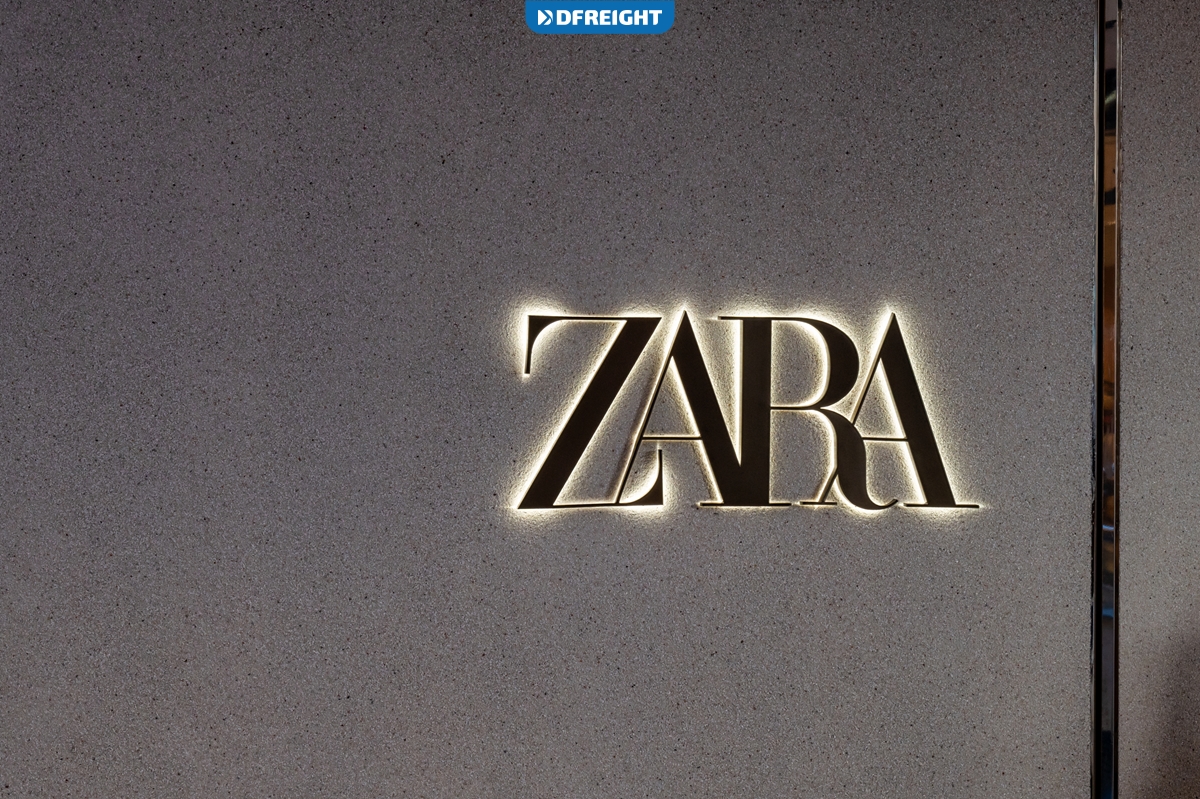
Fashion at the Speed of Light: Delving into Zara Supply Chain Strategy – DFreight
The fashion industry is fast-paced and ever-evolving, so supply chain strategies need to keep up with the times to keep up with the competition. Zara, one of the top players in the fashion market, is continuously looking for new ways to enhance their supply chain to provide fast and easy access to fashionable products to their customers. Digital freight forwarder DFreight can assist with this process, providing quick, accurate, and dependable solutions to the fashion sector. With dynamic and ever-changing case-by-case services, DFreight is the right partner to help fashion brands remain competitive in an ever-increasing international market.
Read this article to learn more about how ZARA is leveraging supply chain strategies to remain the fashion industry leader.
Table of Contents
Zara’s Rise as a Fast Fashion Powerhouse
Zara , a Spanish fashion powerhouse, has revolutionized the fashion industry. With its fast fashion business model, Zara has become one of the world’s most powerful brands, providing customers with a wide selection of fashionable products at reasonable prices. Zara’s stores still offer seasonal pieces, but the company now provides online shopping for the international market.
With its innovative marketing, production, and logistics system, Zara is able to quickly refresh collections with new products and move merchandise from production to store shelves in record time. It has also focused on creating unique collaborations with designers and artists to appeal to a broader base of shoppers. Thanks to its combination of style, speed, and innovation , Zara has become one of the most talked-about names in fashion.

Understanding Zara’s Fast Fashion Model
Zara has revolutionized the fashion industry by successfully implementing its fast fashion model, allowing customers to stay on the cutting edge of fashion trends without requiring a hefty investment.
The Concept of Fast Fashion and its Significance
Fast fashion is the process of rapidly producing fashionable items to meet current trends and demands while delivering them quickly and cost-effectively. This allows customers to stay on the cutting edge of fashion at a fraction of the cost.
Zara’s Unique Approach to Fast Fashion and its Benefits
Zara has taken the concept of fast fashion to a new level by having two to three collections a season, enabling it to have the latest styles on the market faster than any other company. In addition, its supply chain strategy enables faster market speed, allowing them to bring items from design to stores in as little as four weeks. Furthermore, it allows for a high level of customization and leveraging of economies of scale, resulting in increased profitability.
How Zara’s Supply Chain Strategy Enables Rapid Production and Distribution
Zara’s supply chain strategy gives them greater control over its production process, allowing for faster speed to market that brings items from design to stores in as little as four weeks. Additionally, it allows for a high level of customization and leveraging of economies of scale, resulting in increased profitability.
In the previous blogs, we looked into the supply chains of famous and leading companies, which you can read about each of them in the section below.
The Role of Vertical Integration in Zara Supply Chain strategy
Zara’s vertically integrated business model has enabled the successful international fashion retailer to gain a competitive edge in the industry by reducing inventory costs, increasing production speed, and continuously offering customers the latest trends.
Exploring Zara’s Vertically Integrated B usiness Model
Zara’s vertically integrated business model is based on owning and controlling each element of the supply chain from production to the finished product. This includes producing raw materials, manufacturing, warehousing, distribution, advertising, retailing, and logistics. By taking control of the entire supply chain, Zara is able to reduce inventory costs, speed up the production process, and provide customers with constantly updated fashion trends that are on-trend with current styles.
The Advantages of Owning the Entire Supply Chain Process
With Zara’s vertically integrated business model, they are able to reap many advantages, including reduction of inventory costs, increased speed of production, and the ability to bring customers the latest trends, as well as price flexibility. With complete control of its supply chain, Zara is able to produce new styles faster than their competitors can and offer them at competitive prices. Furthermore, Zara is able to adjust production levels to better meet customer demand, thus saving money on inventory costs.
How Vertical Integration Contributes to Zara’s Speed and Flexibility
Vertical integration has enabled Zara to have a speed-to-market strategy, offering customers twice-weekly drops of new store items. Zara can provide customers with a constant flow of current fashion trends without worrying about inventory costs or long production times. Furthermore, vertical integration allows Zara to be flexible in their production – quickly adjust their factory output to meet customer demand. This combination of speed and flexibility will enable Zara to remain competitive in the ever-changing fashion industry.
Just-in-Time Manufacturing: Zara’s Agile Supply Chain
Just-in-time manufacturing is an efficient and cost-effective way of managing a supply chain. Zara’s supply chain incorporates this approach, allowing them to quickly produce and deliver small batches of clothes that respond to changing fashion trends and customer needs. While this approach provides many benefits, there can also be challenges associated with it.
An Explanation of the Just-in-Time M anufacturing Concept
Just-in-time (JIT) manufacturing is an efficient and cost-effective way of managing a supply chain. It is a management system involving the close coordination of procurement and production processes to produce the correct item, at the right quantity, at the right time, and in the right place to meet customer demand. This approach is based on the Japanese lean manufacturing concept of creating value with less waste by making needed items only when they are required and no more. The idea is to reduce inventory, streamline production, and improve resource utilization.
How Zara’s Supply Chain Incorporates Just-in-Time Manufacturing
Zara’s supply chain incorporates just-in-time manufacturing principles to improve efficiency. Zara is able to get clothes designed, manufactured, and delivered to stores within just two weeks. They use a network of manufacturers worldwide to produce and deliver the small batches that Zara orders quickly. This gives Zara an advantage over competitors with longer lead times, allowing them to respond rapidly to changing fashion trends and customer needs.
The Benefits and Challenges Associated with this Approach
Just-in-time manufacturing provides many benefits, such as reducing inventory costs and space requirements, streamlining production, and delivering a product that is exactly what customers want. However, it can also come with challenges, such as increased pressure on suppliers to meet tight production timelines and the need for strong communication between different parts of the supply chain to coordinate effectively. Additionally, there is always the risk that unexpected events, such as natural disasters or pandemics, could disrupt the supply chain .
Dynamic Inventory Management: The Secret Weapon
Dynamic inventory management helps retailers stay updated with the latest fashion trends, allowing them to maintain relevancy and profitability in the dynamic fashion industry.
Zara’s Dynamic Inventory Management System
Zara’s dynamic inventory management system is considered pioneering in the fashion industry. It allows Zara to respond quickly to the ever-changing fashion trends and demands of consumers. The quick turnaround helps Zara maintain relevance and profitability in the dynamic industry. The system provides real-time data and consumer behavior insights, enabling Zara to replicate and update consumer preferences. This allows Zara to keep up with the latest fashion trends and choose the right quantities and items to stock in their stores.
The Use of Real-Time Data and Consumer Insights
Real-time data and insights from consumers can be used to make informed decisions about product inventories. Retailers can plan ahead and optimize merchandise stocking by understanding consumer behavior, such as preferred trends, sizes, and colors. Utilizing this information also helps retailers identify potential risks regarding inventory. This helps retailers minimize wasted stock risk and decrease inventory costs.
Strategies for Efficiently Managing Inventory While Minimizing Waste
To successfully manage inventory, retailers need to adopt strategies that help minimize waste. One such strategy is to practice continuous inventory review. This ensures timely identification of slow or discontinued items that do not meet consumer demand or have become outdated. Another effective strategy is to focus on cyclicality. This involves forecasting demand for seasonal items and stocking them based on past sales data. This helps optimize stocking decisions and minimize the risk of wasting time or money on overstocking or understocking items.
Efficient Distribution Network: From Factory to Store
Zara has implemented advanced logistics and transportation strategies to optimize the speed and accuracy of product distribution for their customers worldwide. This allows them to ensure the timely arrival of products and keep up with ever-changing fashion trends. Through careful inventory management , shipments, and pacing, Zara can ensure that their customers get their orders quickly and accurately.
Additionally, they have gone to great lengths to reduce costs, driving their profitability. Through direct connection with suppliers and providing detailed logistics planning and oversight of the entire distribution process, they have been successful in achieving their goal of a reliable and efficiently managed worldwide supply chain network.

Sustainability in Zara’s Supply Chain Strategy
Zara has demonstrated its commitment to sustainability by implementing initiatives and strategies to reduce their environmental impact while offering fashionable and affordable products.
Zara’s Initiatives towards Sustainability and Ethical Sourcing
Zara is one of the largest fashion retailers in the world, and they have implemented a range of initiatives to promote sustainability and ethical sourcing in their supply chain strategy. These include utilizing organic fabrics and natural fibers, limiting the impact of harmful chemicals, and increasing the monitoring of ethical standards within the supply chain. With each new product release, they strive to reduce their environmental impact while still being able to offer their consumers fashionable and affordable products.
Balancing Fast Fashion with Environmental and Social Responsibility
Zara balances the need for fast fashion with environmental and social responsibility. They have put strategies in place to reduce the amount of water used in manufacturing processes while encouraging people to reduce their consumption of fast fashion by creating pieces that can withstand multiple trends, seasons, and occasions. Additionally, Zara incorporates fair wages and safer working conditions as a standard in their production process.
The Challenges and Future Prospects of Sustainable Fashion
While there has been a lot of progress towards green and sustainable fashion over the past few years, there are still many challenges ahead. Suppliers need help to keep up as the demand for ethical and sustainable products grows. Moreover, the production process from raw materials to finished products is complex. It often involves a long supply chain, which can be daunting to track and monitor for sustainable practices. Looking towards the future, companies are turning towards more transparent and efficient supply chains, as well as renewable materials and innovative technologies to reduce their environmental impact.
Implications for other Fashion Brands and the Industry as a Whole
For other fashion brands to remain competitive, they must take Zara’s lead and develop effective supply chain strategies. This involves creating a production system responsive to trends, investing heavily in research and design teams to create unique products, and utilizing agile forecasting. It’s important to note, however, that both Zara’s success and the strategies of other fashion brands may also be shaped by the emergence of technologies in the fashion supply chain—such as predictive analytics, robotics , blockchain , and artificial intelligence like chat GPT . As these technologies grow in sophistication, it will be essential for fashion brands to keep up with the changing landscape and adjust their supply chain strategies to remain competitive.
The Future Direction of Supply Chain Strategies in the Fashion Industry
Looking to the future, it’s clear that supply chain strategies in the fashion industry will need to keep pace with consumers’ rapidly changing consumer preferences. The challenge for fashion brands will be maintaining agility and flexibility while mitigating cost and risk. Zara’s success offers key lessons for the industry, and for fashion brands to succeed, they must learn from Zara’s example and leverage the same strategies to remain competitive.
Zara’s supply chain strategy is a valuable case study for businesses across industries. We have summarized the key takeaways and lessons that can be learned from Zara’s success, including the importance of agility, responsiveness, and customer-centricity in supply chain management. By understanding and applying these lessons, other companies can adapt and thrive in today’s rapidly changing business landscape.
What is Zara’s supply chain strategy?
Zara’s supply chain strategy is based on a vertical integration business model, where the company controls the entire production process, from design and manufacturing to distribution and retail. By having control over every aspect of the supply chain, Zara is able to quickly analyze trends, come out with new styles and get them into stores faster, enabling it to stay ahead in the fashion industry.
What makes Zara’s supply chain unique?
Zara’s supply chain is unique because it is built on a short, agile production cycle that allows them to keep up with fast fashion trends and respond quickly to changing market needs. From design to delivery, the process takes only a few weeks, enabling Zara to introduce new styles for its customers continuously.
How does Zara use technology to remain competitive?
Zara uses several innovative technological solutions to remain competitive. These include a barcode system for tracking and monitoring in-store inventory, RFID technology to track products in warehouses and stores, and AI-driven algorithms for forecasting sales and optimizing production. Zara has also implemented a cloud-based platform, allowing it to collaborate with its global suppliers easily.
How does Zara’s supply chain enable it to offer lower prices?
Zara’s vertical integration model and agile production cycle allow them to save time and money, which they can pass on to their customers. Additionally, due to the reduced lead times in their supply chain, Zara can minimize the costs associated with inventory and warehousing, resulting in lower customer prices.
Air transportation is a convenient and fast way to move cargo and is suitable for small and large companies as well as individuals. You Might Also Like

Commodities

Most Popular

- SUGGESTED TOPICS
- The Magazine
- Newsletters
- Managing Yourself
- Managing Teams
- Work-life Balance
- The Big Idea
- Data & Visuals
- Reading Lists
- Case Selections
- HBR Learning
- Topic Feeds
- Account Settings
- Email Preferences
Rapid-Fire Fulfillment
- Kasra Ferdows,
- Michael A. Lewis,
- Jose A.D. Machuca
Spanish clothier Zara turns the rules of supply chain management on their head. The result? A superresponsive network and profit margins that are the envy of the industry.
Reprint: R0411G
Would you send a half-empty truck across Europe or pay to airfreight coats to Japan twice a week? Would you move unsold items out of your shop after only two weeks? Would you run your factories just during the day shift? Is this any way to run an efficient supply chain?
For Spanish clothier Zara it is. Not that any one of these tactics is especially effective in itself. Rather, they stem from a holistic approach to supply chain management that optimizes the entire chain instead of focusing on individual parts. In the process, Zara defies most of the current conventional wisdom about how supply chains should be run.
Unlike so many of its peers, which rush to outsource, Zara keeps almost half of its production in-house. Far from pushing its factories to maximize output, the company focuses capital on building extra capacity. Rather than chase economies of scale, Zara manufactures and distributes products in small batches. Instead of outside partners, the company manages all design, warehousing, distribution, and logistics functions itself.
The result is a superresponsive supply chain exquisitely tailored to Zara’s business model. Zara can design, produce, and deliver a new garment to its 600-plus stores worldwide in a mere 15 days. So in Zara’s shops, customers can always find new products—but in limited supply. Customers think, “This green shirt fits me, and there is one on the rack. If I don’t buy it now, I’ll lose my chance.” That urgency translates into high profit margins and steady 20% yearly growth in a tough economic climate.
Some of Zara’s specific practices may be directly applicable only in industries where product life cycles are very short. But Zara’s simple philosophy of reaping bottom-line profits through end-to-end control of the supply chain can be applied to any industry.
When a German wholesaler suddenly canceled a big lingerie order in 1975, Amancio Ortega thought his fledgling clothing company might go bankrupt. All his capital was tied up in the order. There were no other buyers. In desperation, he opened a shop near his factory in La Coruña, in the far northwest corner of Spain, and sold the goods himself. He called the shop Zara.
- KF Kasra Ferdows ( [email protected] ) is the Heisley Family Professor of Global Manufacturing at Georgetown University’s McDonough School of Business in Washington DC.
- ML Michael A. Lewis is a professor of operations and supply management at the University of Bath School of Management in the UK.
- JM Jose A.D. Machuca is a professor of operations management at the University of Seville in Spain.
Partner Center

May 22-23 Miami, FL
Register Now
Zara – a Masterclass in Supplier Relationships and Supply Chain Management
di Vishal Patel
Zara has not been immune to the effects of Covid-19 but the company has said that it’s flexible business model and approach to supplier relationships have been pivotal in helping it to navigate the pandemic. Although Zara is not a customer of Ivalua, we have many customers who operate in ways which have meant they have been able to continue to operate during this period with little disruption.
How agile supply chain management & supplier relationships drive a sustainable competitive advantage .
As companies work to build supply chain resilience and agility in their supply chains in light of the Covid-19 pandemic as well as growing pressure to improve sustainability, some lessons can be learned by taking a look back. On September 7th 2016, a relatively unknown person became the richest man on the planet during two days before Bill Gates reclaimed his title (recently overtaken by Jeff Bezos). The man is called Amancio Ortega , and journalists were surprised to find out he is the founder of the retail store Zara.
What is striking in Zara’s success is that the brand keeps defying the rules and conventions of the fashion industry. They do not give many interviews and do not invest much money in advertising or public relations. It also has always taken a non-traditional approach to supplier relationships and supplier collaboration , which offers good lessons for today’s supply chain leaders.
Zara & fast-fashion
Zara’s success is driven in no small measure on a very rapid time-to-market, truly “ Fast-fashion ”. Fast-fashion is the process of bringing new trends to the market as quickly and cheaply as possible. While Zara is also an outlier in many other domains, it is really its agile Supply Chain that enabled it to become one of the most profitable fashion brands in the world and sustain rapid growth year after year. More significantly, Zara’s approach to establishing an agile Supply Chain is quite interesting.
Zara’s Supply Chain Approach
The key to Zara’s ability to establish an agile Supply Chain rests on the following unique approaches:
- Procurement Methodology: Zara’s Procurement team doesn’t work on the number of finished clothes but on the quantity of raw materials needed to manufacture the clothes. This helps reduce waste, as you can re-use fabric but not resell a piece of clothing that didn’t meet the expectations. A great example of how sustainability can be improved in parallel to cost reduction.
- Deep Collaboration: Supplier relationships are key and suppliers are all close to Zara factories and collaborate tightly, so Zara can order on an everyday-need basis.
- Production Feedback: Everyday, store managers give customer feedback to the market specialists, who then pass the information along to production & design teams. This rapid feedback loop enables a quick and agile response to the market.
- Local Manufacturing: Zara presents a drastically different approach than its competitors. Instead of outsourcing all of its production to Asia or Eastern Europe, it decided to manufacture its products in Galicia for items with a more instable deman. While lower cost production could be achieved in other regions, the faster time to market, reduced transportation costs and low exposure to changing tariffs and politics outweigh that one factor. This reduces overall supply risk, with a more narrow set of risks than posed by more extended, global supply chains. This also helps reduce the overall carbon footprint through significant reduction in transportation.
- Spare Capacity . Zara voluntarily keeps up to 85% of its plants idle, in order to optimize the response to demand changes all around the world. Another interesting approach, quite different to competitors that try to maximize utilization.
- Demand Forecasting: Zara reaps the benefits of very efficient inventory management models that help them determine the exact quantity of items needed for every store. They ship very small batches twice a week. As a result, it creates a sense of scarcity, very few items are unsold, and if the experiment fails there is much time (thanks to their very responsive Supply Chain) to try other different styles. This eventually helps Zara find the right product almost every time.
Zara’s approach is certainly untraditional and has served it well. Supply Chain leaders should assess whether specific aspects are as suitable to their business as to Zara. With the growing pressure for more agile, stable and sustainable Supply Chains, Zara certainly offers interesting lessons to consider. How organizations work with their supply chain and manage supplier relationships is going to be key to getting businesses back to growth in the post-pandemic world.
If you would like to know more about how Ivalua is working with Global Retailers like Zara, please contact us

Vishal Patel
Vp product marketing.
Vishal has spent the last 15 years in various roles within the Procurement and Supply Chain technology market. As an industry analyst, he researched and advised organizations in various industries on best and innovative practices, digitization and optimization. He brings a thorough understanding of market trends and digital technologies that can help enterprises be more effective with their Procurement and Supply Chain strategies. He works to ensure that organizations are empowered with technology platforms that enable flexibility, innovation, and agility.
You can connect with Vishal on Linkedin
You May Also Like
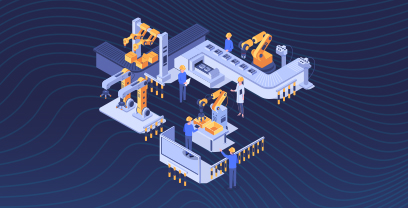
Supplier Lifecycle Management (SLM) Explained: From Onboarding to Collaboration


Vendor Management in the Digital Age: Embracing Automation and AI
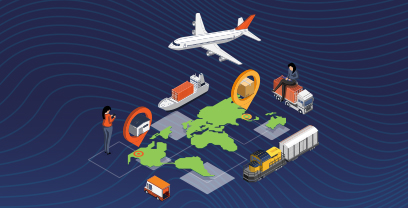
Ultimate Guide to Supplier Performance Management (SPM)
Ready to realize the possibilities.


How Zara’s strategy made her the queen of fast fashion
Table of contents, here’s what you’ll learn from zara's strategy study:.
- How to come up with disruptive ideas for your industry.
- How finding the right people is more important than developing the best strategy.
- How best to address the sustainability question.
Zara is a privately held multinational clothing retail chain with a focus on fast fashion. It was founded by Amancio Ortega in 1975 and it’s the largest company of the Inditex group.
Amancio Ortega was Inditex’s Chairman until 2011 and Zara’s CEO until 2005. The current CEO of Zara is Óscar García Maceiras and Marta Ortega Pérez, daughter of the founder, is the current Chairwoman of Inditex.
Zara's market share and key statistics:
- Brand value of $25,4 billion in 2022
- Net sales of $19,6 billion in 2021
- 1,939 stores worldwide in 2021
- Over 4 billion annual visits to its website
- Inditex employee count of 165,042 in 2021
{{cta('ba277e9c-bdee-47b7-859b-a090f03f4b33')}}
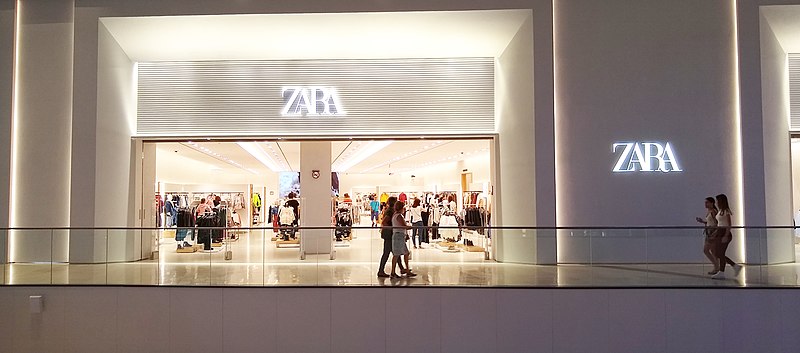
Humble beginnings: How did Zara start?
Most people date Zara’s birth to 1975, when Amancio Ortega and Rosalia Mera, his then-wife, opened the first shop. But, it’s impossible to study the company’s first steps, its initial competitive advantage, and strategic approach by starting at that point in time.
When the first Zara shop opened, Amancio Ortega already had 22 years of industry experience, ten years as a clever and hard-working employee, and 12 years as a business owner. Rosalia Mera also had 20 years of industry experience.
As an employee , Ortega worked in the clothing industry, first as a gofer and then as a delivery boy. He quickly demonstrated great talent for recognizing fabrics, understanding and serving customers, and making sound business suggestions. Soon, he decided to use his insights to develop his own business instead of his boss’s.
As a business owner , he started GOA Confecciones in 1963, along with his siblings, his wife, and a close friend. They started with a humble workshop making women’s quilted dressing gowns, following a trend at the time Amancio had noticed. Within ten years, that workshop had grown to support a workforce of 500 people.
And then, the couple opened the first Zara shop.
Zara’s competitive positioning strategy in its first year
The opening of the first Zara shop in 1975 wasn’t just a new store to sell clothes. It was the final big move of a carefully planned vertical integration strategy.
To understand how the strategy was formulated , we need to understand Amancio’s first steps. His first business, GOA Confecciones, was a manufacturing business. He was supplying small stores and businesses with his products, and he wasn’t in contact with the end customer.
That brought two challenges:
- A lack of insight into market trends and no direct consumer feedback about preferences.
- Very low-profit margins compared to the 70-80% profit margin of retailers.
Amancio developed several ideas to improve distribution and get a direct relationship with the final purchaser. And he was always updating his factories with the latest technological advancements to offer the highest quality of products at the lowest possible price. But he was missing one essential part to reap the benefits of his distribution practices: a store .
So, in 1972 he opened one under the brand name Sprint . An experiment that quickly proved unsuccessful and, seven years later, was shut down. Although it’s unknown the extent to which Amancio put his ideas to the test, Sprint was a private masterclass in the retail world that gave Amancio insights that would later turn Zara into a global success.
Despite Sprint’s failure, Amancio didn’t abandon the idea of opening his own store mainly because he believed that his advanced production model was vulnerable and the rise of a competitor who could replicate and improve his system was imminent.
Adding a store to his vertical integration strategy would have a twofold effect:
- The store would operate as a direct feedback source. The company would be able to test design ideas before going into mass production while simultaneously getting an accurate pulse of the needs, tastes, and fancies of the customers. The store would simultaneously reduce risk and increase opportunity spotting.
- The company would have reduced operating costs as a retailer. Since the group would control all aspects of the process (from manufacturing to distribution to selling), it would solve key retail challenges with stocking. The savings would then be passed on to the customer. The store would have an operational competitive advantage and become a potential cash cow for the company.
The idea was to claim his spot in prime commercial areas (a core and persistent strategic move for Zara) and target the rising middle class. The market conditions were tough, though, with many family-owned businesses losing their customer base, giant players owning a huge market share, and Benetton’s franchising shops stealing great shop locations and competent potential managers.
So the first Zara store had these defining characteristics that made it the successful final piece of Amancio’s strategy:
- It was located near the factory = delivery of products was optimized
- It was in the city’s commercial heart = more expensive, but with access to affluence
- It was located in the city where Ortegas had the most customer experience = knowing thy customer
- It was visibly attractive = expensive, but a great marketing trick
Amancio’s team lacked experience and expertise in one key factor: display window designing . The display window was a massive differentiator and had to be bold and attractive. So, Amancio hired Jordi Bernadó, a designer with innovative ideas whose work transformed display windows and the sales process.
The Zara shop was a success, laying the foundations for the international expansion of the Inditex group.
Key Takeaway #1: Challenge your industry’s conventional wisdom to create a disruptive strategy
Disrupting an industry isn’t an easy task nor a frequent occurrence.
To do it successfully, you need to:
- Understand the prominent business mode of your industry and the forces that contributed to its development.
- Challenge the assumptions behind it and design a radically different business model.
- Develop ample space for experimentation and failures.
The odds of instantly conquering the industry might be low (otherwise, someone would have already done it), but you’ll end up with out-of-the-box ideas and a higher sensitivity to potential disruptors in your competitive arena.
Recommended reading: How To Write A Strategic Plan + Example
How Zara’s supply chain strategy is at the core of its business strategy
According to many analysts, the Zara supply chain strategy is its most important innovative component.
Amancio Ortega and other senior members of the group disagree. Nevertheless, the Inditex logistics strategy is extraordinarily efficient and plays a crucial role in sustaining its competitive advantage. Most companies in the clothing retail industry take an average of 4-8 weeks between inception and putting the product on the shelf. The group achieves the same in an average of two weeks. That’s nothing short of extraordinary.
Let’s see how Zara developed its logistics and business strategy.
Innovative logistics: how Zara’s supply chain evolved
The logistics methods developed by companies are highly dependent on external factors.
Take, for example, infrastructure. In the early days of Zara, when it was expanding through Spain, the company considered using trains as a transportation system. However, the schedule couldn’t keep up with Zara’s needs, which had the goal of distributing products twice a week to its shops. So transportation by road was the only way.
However, when efficiency is a high priority, it shapes logistics processes more than anything else.
And for Zara, efficient logistics was – and still is – of the highest priority.
Initially, leadership tried outsourcing logistics, but the experiment failed and the company assigned a member of the house with a thorough knowledge of the company's operating philosophy to take charge of the project. The tactic of entrusting important big projects to employees imbued with the company’s philosophy became a defining characteristic.
So, one of Zara’s early strategic decisions was that each shop would make orders twice a week. Since the first store was opened, the company has had the shortest stock rotation times in the industry. That’s what drove the development of its logistics methods. The whole strategy behind Zara relied on quick production and distribution. And the proximity of manufacturing and distribution was essential for the model to work. So Zara had these two centers in the same place.
Even when the brand was expanding around the world, its logistics center remained in Arteixo, Spain, despite being a less-than-ideal location for international distribution. At some point, the growth of the brand, and Inditex as a whole, outpaced Arteixo’s capacity, and the decentralization question came up.
The debate was tough among leadership, but the arguments were strong. Decentralization was necessary because of:
- Safety and security. If there was a fire or any other crippling disaster there (especially on a distribution day), then the company would face serious troubles on multiple fronts.
- Arteixo’s limitations. The company’s center in Arteixo was reaching its capacity limits.
So the company decided to decentralize the manufacturing and distribution of its brands.
Initially, the group made the decision to place differentiated logistics centers where the management of its chain of stores was based, i.e. Bershka would have a different logistics center than Pull&Bear, although they were both part of the Inditex Group. That idea emerged after Massimo Dutti and Stradivarius became part of Inditex. Those brands already had that geographical structure, and since the group integrated them successfully into its strategy and logistics model, it made sense to follow the same pattern with its other brands.
Besides, the proximity of the distribution centers to the headquarters of each brand allowed them to consolidate them based on the growth strategy and purpose of each brand (more on this later).
But just a few years after that, the group decided to build another production center for Zara that forced specialization between the two Zara centers. The specialization was based on location, i.e. each center would manufacture products that would stock the shelves of stores in specific locations.
Zara’s supply chain strategy is so successful because it’s constantly evolving as the group adapts to external circumstances and its internal needs. And just like its iconic fashion, the company always stays ahead of the logistics curve.
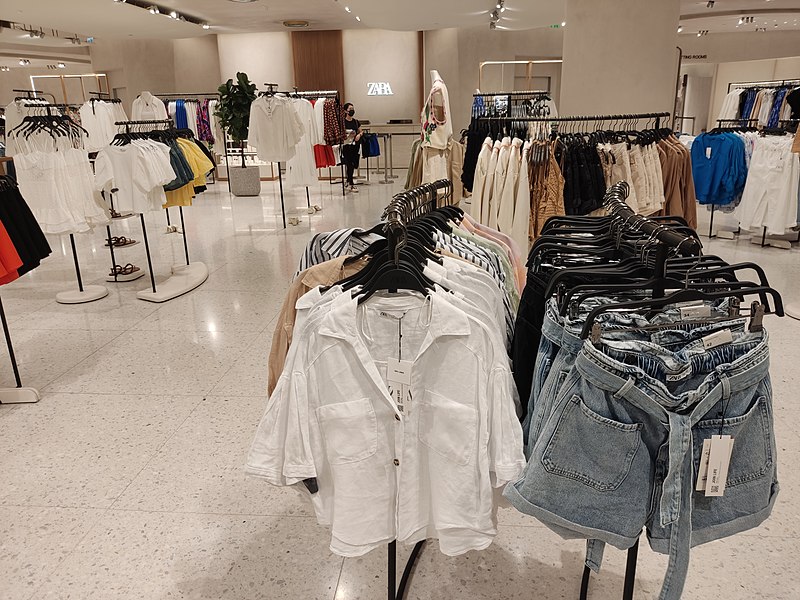
Zara’s business strategy transcends its logistics innovations
Zara’s business strategy relies on four key pillars:
- Flexibility of supply
- Instant absorption of market demand
- Response speed
- Technological innovation
Zara is the only brand in the Inditex group that is concerned with manufacturing. It’s the first brand in the clothing sector with a complete vertical organization. And the production model requires the adoption or development of the latest technological innovations.
This requirement is counterintuitive in the clothing sector.
Most people believe that making big investments in a market as mature as clothing is a bad idea. But the Zara production model is very capital and labor intensive. The technological edge derived from that investment gave the company, in the early days, the capability to manufacture over 50% of its own products while maintaining an extremely high stock rotation frequency.
Zara might be one of the best logistics companies in the world, but that particular excellence is a supporting factor, or at least a highly contributing factor, to its successful business strategy.
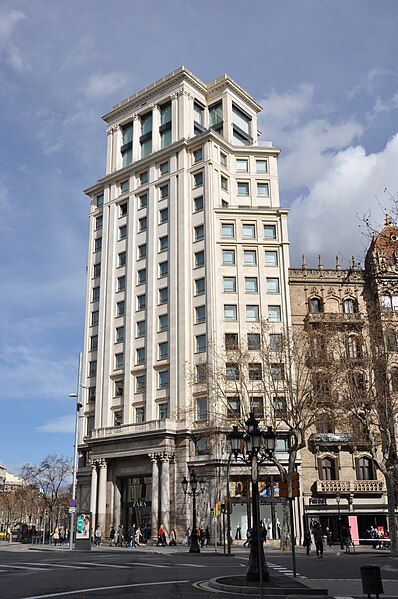
Zara’s business strategy is so much more than its supply chain strategy.
The company created the “fast fashion” term and industry. When other companies were manufacturing their collections once per season, Zara was adapting its collection to suit what people asked for on a weekly basis. The idea was to offer fashionable items at a fair price and faster than everybody else.
Part of its cost-cutting strategic priority was its marketing strategy. Zara didn’t – and still doesn’t – advertise like the rest of the clothing industry. Its marketing strategy starts with choosing the location of the stores and ends with advertising that the sales period has started. In the early years of the brand’s expansion, Amancio would visit potential store locations himself and choose the site to build the Zara shop.
The price was never an issue. If the location was in a commercial center, Zara would build its store there no matter how high the cost was because the company expected to recoup it quickly with increased sales.
Zara’s marketing is its own stores.
The strategy of Zara and her Inditex sisters
Despite Zara’s success (or because of it), Amancio Ortega created – or bought – multiple other brands that he included in the Inditex group, each one with a specific purpose.
- Zara was targeting middle-class women.
- Pull&Bear was targeting young people under twenty-five years old with casual clothing.
- Bershka was targeting rebel teens, especially girls, with hip-hop-style clothing.
- Massimo Dutti was targeting both sexes with more affluence.
- Stradivarius was competing with Bershka, giving Inditex two major brands in the teenage market.
- Oysho was concentrating on women's lingerie.
- Zara Home manufactures home textiles and decor.
Pull&Bear was initially targeting young males between the ages of 14 and 28. Later it extended to young females of the same age and focused on selling leisure and sports clothing. It has the slowest stock turnaround time in the group.
Bershka’s target group was girls between 13 and 23 years of age with highly individualized tastes. Prices were low, but the quality average. Almost a fiasco in the beginning, it underwent a successful strategic turnaround becoming today one of the biggest growth opportunities for the group. And out of all the Inditex chains, Bershka has the most creative designs.
Massimo Dutti was the first retail brand Amancio bought and didn’t create himself. Its strategy is very different from Zara, producing high-quality products and selling them at a high price. It’s an extension of the group’s offer to the higher end of the price spectrum in the fashion industry. It’s also the only Inditex chain brand that advertises regularly.
Stradivarius was the second acquired brand, with the purchase being a defensive move. The chain shares the same target group with Bershka, making it, to this day, a direct competitor.
Oysho started as an underwear and lingerie company. Its product lines evolved to include comfortable night and homewear along with swimwear and a very young children’s line. The brand’s strategy was aggressive from its conception, opening 286 stores in its first six years of existence.
Zara Home is the youngest brand in the Group and the only one outside the clothing sector, though still in the fashion industry. It was launched with the least confidence and with immense prior research. An experiment to extend the Zara brand beyond clothing, it was based on the conservative view that Zara could extend its product categories only to textile items for the home. But it turned out that customers were more accepting of Zara Home selling a wide variety of domestic items. So the brand made a successful strategic pivot.
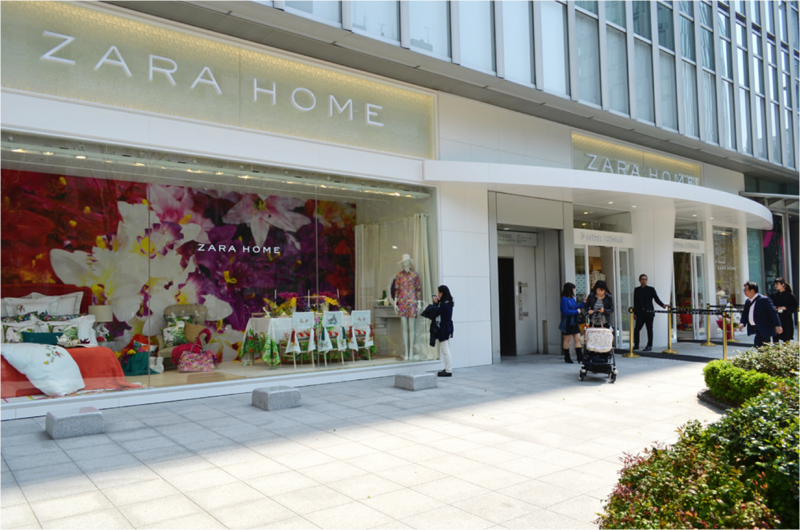
Key Takeaway #2: The right people are more important than the best strategy
It might not be obvious in the story, but a key reason for Zara's and Inditex’s success has been the people behind them.
For example, a vast number of people in various positions from inside the group claim that Inditex cannot be understood without Amancio Ortega. Additionally, major projects like the development of Zara’s logistics systems and the group's international expansion had such a success precisely because of the people in charge of them.
Zara’s radically different model was a breakthrough because:
- Its leadership had a clear vision and a real strategy to execute it.
- People with a deep understanding of the company’s philosophy led Its largest projects.
Sustainability: Zara’s strategy to make fast fashion sustainable
Building a sustainable business in the fast fashion industry is a tough nut to crack.
To achieve it, Inditex has made sustainability a cornerstone of its business model. Its strategy revolves around the values of collaboration , transparency, and innovation . The group’s ambition is to make a positive impact with a vision of prosperity for the planet and its people by transforming its value chain and industry.
Inditex’s sustainability commitments and strategy to achieve them
Inditex has developed a sustainability roadmap that extends up to 2040 with ambitious goals. Specifically, it has committed to
- 100% consumption of renewable energy in all of its facilities by 2022 (report pending).
- 100% of its cotton to originate from more sustainable sources by 2023.
- 100% of its man-made cellulosic fibers to originate from more sustainable sources by 2023.
- Zero waste from its facilities by 2023.
- 100% elimination of single-use plastic for customers by 2023.
- 100% collection of packaging material for recycling or reuse by 2023.
- 100% of its polyester to originate from more sustainable sources by 2025.
- 100% of its linen to originate from sustainable sources by 2025.
- 25% reduction of water consumption in its supply chain by 2025.
- Net zero emissions by 2040.
The group’s commitments extend beyond environmental issues to how its manufacturing and supplying partners conduct their business . To bring its strategy to fruition, it has set up a new governance and management structure.
The Board of Directors is responsible for approving Inditex’s sustainability strategy. The Sustainability Committee oversees and controls all the proposals around the social, environmental, health, and safety impact of the group’s products, while the Ethics Committee makes sure operations are compliant with the rules of conduct. There is also a Social Advisory Board that includes external independent experts that advises Inditex on sustainability issues.
Finally, Javier Losada, previously the group’s Chief Sustainability Officer and now promoted to Chief Operations Officer, will be leading the sustainability transformation of the group. Javier Losada first joined Inditex back in 1993 and ascended its rank to reach the C-suite.
Inditex is dedicated to its commitment to reducing its environmental impact and seems to be headed in the right direction. The only question is whether it’s fast enough.
Key Takeaway #3: Integrating sustainability with business strategy is a present-day necessity
Governments and international bodies around the world are implementing more stringent environmental regulations, forcing companies to commit to ambitious goals and developing a realistic strategy to achieve them.
The companies that are impacted the least are those that always had sustainability as a high priority .
From the companies that require significant changes in their operations to comply with the new regulations, only those who integrate sustainability into their business strategy and model will succeed.
Why is Zara so successful?

Zara is the biggest Spanish clothing retailer in the world based on sales value. Its success is due to its fast fashion strategy that is based on a strong supply chain and quick market feedback loops.
Zara's customer-centric approach places a strong emphasis on understanding and responding to customer needs and preferences. This is reflected in the company's product design, marketing, and customer service strategies.
Zara made fashionable clothes accessible to the middle class.
Zara’s vision guides its future
Zara's vision, as part of the Inditex Group, is to create a sustainable fashion industry by promoting responsible consumption and production, respecting the environment and people, and contributing to the communities in which it operates.
The company aims to offer the latest fashion trends to its customers at accessible prices while continuously innovating and improving its operations and processes.
Growth by numbers (Inditex)
Subscribe to AI in Action – your guide to AI adoption in business >

- September 23, 2023
- AI Case Studies
Case Study: Zara’s Comprehensive Approach to AI and Supply Chain Management

Zara, an international fashion retailer based in Spain, has integrated artificial intelligence (AI) into various aspects of its business operations to enhance efficiency, responsiveness, and customer engagement. Unlike many competitors, Zara’s use of AI is not limited to consumer behavior analytics but extends throughout its supply chain and inventory management systems. By embracing cutting-edge technologies like RFID tagging, real-time analytics, and machine learning, Zara aims to maintain its competitive edge in the fast-paced fashion industry.
Key Takeaways
- Zara employs a comprehensive use of AI across multiple facets of its operations, ranging from supply chain management to customer engagement.
- Unlike many competitors, Zara minimizes outsourcing, enabling them to exercise greater control and gather data at every stage of the business process.
- The company utilizes an advanced Just-In-telligent supply chain system, allowing for real-time optimization of inventory levels and logistics.
- Zara can rapidly respond to market trends and consumer demands, boasting a turnaround time for new designs that is as quick as one week.
- Their strategic use of AI has led to improved customer satisfaction and loyalty, as well as high rankings in global online fashion sales.
Deep Dive: Zara’s Comprehensive Approach to AI and Supply Chain Management
Zara’s approach to AI is holistic, involving every segment of its business operations. The company combines the principles of just-in-time inventory management with AI and real-time data analytics, creating a Just-In-telligent supply chain system. By doing this, Zara can closely monitor inventory levels, supplier performance, and even consumer behavior.
Implementation
Zara has collaborated with several technology partners to implement AI in its operations. For instance, it partnered with Tyco to embed microchips into its clothing’s security tags, enhancing inventory visibility. The firm also collaborates with Jetlore to predict customer behavior based on structured predictive attributes like size, color, fit, and style. RFID tags and sophisticated logistics systems further allow Zara to optimize transportation and inventory, reducing waste and ensuring that popular items are always available.
The results have been substantial. Zara’s turnaround time for new designs is as little as one week, far below the industry average of three to six months. It enjoys a loyal customer base and ranks among the top in global online fashion sales. The company’s unique approach to using AI for real-time monitoring and forecasting has also led to reduced lead times, improved delivery accuracy, and minimized inventory carrying costs.
Challenges and Barriers
While Zara’s adoption of AI has been overwhelmingly positive, challenges remain. Managing the immense amount of data generated can be a monumental task. The integration of AI into existing systems and processes can also be complex and requires ongoing fine-tuning. Moreover, the reliance on sophisticated AI and machine learning models necessitates skilled human resources to maintain and optimize these systems.
Future Outlook
As AI and machine learning technologies continue to advance, Zara is well-positioned to further refine its algorithms for improved forecasting, supplier management, and customer engagement. Future plans may include even more robust machine learning algorithms for trend prediction and potential integration of blockchain for more transparent and efficient supply chain management.
Zara’s application of artificial intelligence in its operations serves as a benchmark for the retail industry. From supply chain optimization to personalizing customer experience, the company’s comprehensive AI strategy has yielded tangible benefits in efficiency, cost reduction, and customer satisfaction. As technology continues to evolve, Zara seems poised to remain a step ahead of its competitors, setting a precedent for what is achievable with the intelligent use of data and automation.
To get the latest AI case studies straight to your inbox, subscribe to AI in Action by AIX — your weekly newsletter dedicated to the exploration of AI implementation and adoption in business.
Elevate your understanding of AI applications. Browse case studies searchable by company, industry, use case, and technology.
Sources: H&M, Zara, Fast Fashion Turn to Artificial Intelligence to Transform the Supply Chain Zara’s Just-In-telligent Supply Chain Zara: Revolutionizing Fashion Retail with AI
Get in touch
Whether you’re looking for expert guidance on an AI initiative or want to share your AI knowledge with others, our network is the place for you. Let’s work together to build a brighter future powered by AI.
Related Posts

Case Study: Redfin’s Innovative AI Tools
- April 27, 2024

Case Study: Compass Enhances Agent Productivity with AI

Case Study: JLL’s Implementation of JLL GPT™
Building Insights Into Supply Chains: A Case Study

Image: iStock.com/metamorworks
For time-sensitive or temperature-controlled cargo, most shippers will agree that high-quality, real-time tracking information is crucial. Though that technology can be expensive, the investment is easy to justify when it could mean the difference between an on-time delivery and spoiled cargo. But for general cargo — which does not have strict timeline requirements — it can be harder for shippers to justify that cost. Individualized tracking information simply isn’t as critical for those standard loads. And if shippers do decide to invest in tracking devices for general cargo, rarely is the technology advanced enough to make a sizable difference to their bottom line.
Some leaders in the shipping space argue that this view is shortsighted — and could cost companies far more than they realize. Without the data that tracking technology could provide, they believe, many shippers lose out on important insights into their general cargo — data that could significantly improve travel timelines and ultimately justify that initial cost.
Two of these leaders are Maersk, a provider of transportation and logistics services, and Tive, a global leader in supply chain and logistics visibility technology. Both organizations felt that the potential value of tracking insights into general cargo was too important to overlook. So when Erez Agmoni, global head of innovation at Maersk, and Krenar Komoni, founder and CEO of Tive, crossed paths at a supply chain event at MIT a few years back, it was no surprise that they found a common purpose.
Both Agmoni and Komoni knew that tracking technology was too costly to be used across every type of cargo. “Unless it’s valuable, perishable cargo,” says Agmoni, “nobody will want to just go and track every single container, every single shipment — especially considering a few years ago, when it was really expensive.” Agmoni and Komoni knew they needed to develop a more affordable solution that could provide data that was actually relevant to all types of general cargo shipments.
The Proof of Concept
In the years following the MIT event, Agmoni and Komoni explored alternatives that could offer the value they sought at a price point shippers would accept. The first step in their experiment was to design a proof of concept. The team at Maersk took on the task, beginning with outreach. “We went to customers, we brought them in, we started some discussions,” says Agmoni. “We looked into what could help them improve their supply chains.” Over the course of their research, customers commonly expressed frustration with transit times: They were unreliable, inaccurate, and did little to help them plan around the situation at hand. That’s when Agmoni had an idea. Instead of tracking each individual shipment — which, as customers were saying, wasn’t providing the information they actually needed — they could also track aggregated data.
The Maersk Innovation Center designed a proof of concept for a means of keeping tabs on thousands of shipments without having to view each one individually. In other words, they would track aggregated data from thousands of shipments, starting with a route from Los Angeles to Memphis. Tive, meanwhile, started building the hardware and the backend technology. Once the product was ready, Tive ensured that all of the trackers were properly installed at the warehouse in Los Angeles, and that each of them was linked to the appropriate shipment and order.
From there, Tive’s data science and data analytics teams, with input from Maersk, went to work analyzing the data from the trackers — looking at which algorithms they wanted to run on the dataset to figure out what insights they could gain. “Working together, we were able to find some really interesting things,” says Komoni. In the end, the higher-level view yielded surprising insights.
The Results
On the drive from Los Angeles to Memphis, there are two main routes from which truckers can choose: a southern route, which runs near the U.S.–Mexico border, and a northern route, which is a slightly more direct line from point A to point B. On all navigation systems, the northern route is estimated to be two hours faster than its counterpart. But when Maersk and Tive started looking at the aggregated data, they learned something that they couldn’t have known from individualized tracking information.
“When we started to look at the aggregated data,” says Agmoni, “we found out that the northern route is taking six days, plus or minus two — so four to eight days.” Though Google Maps will estimate the drive to be 32 hours, it’s expected that drivers will need to stop and rest along the way, stretching the trip out into several days. But when they looked at the presumably slower, southern route, the average driver was completing the trip in four to six days. Not only was this faster, but the driving estimate was more precise.
To understand why this was, they had to go back to the data. Using a collection of tools and graphs that they’d custom built for this purpose, Tive began to calculate the idle times along each route. “What we said is, ‘why don’t we figure out where the trucks are stopping for the longest time?’” says Komoni. “And then we mapped that out, and we saw these big red spots on areas where they’re stopping on the southern route and also where they’re stopping on the northern route.
”It quickly became clear from the data that drivers on the northern route were stopping much more frequently than on the southern route. “We couldn’t know why they’d do that,” says Agmoni, “so we had to call some of them. And we learned a very interesting thing.”
After speaking with some of the drivers, they learned that rest stops on the northern route are small and, more often than not, completely full. “It’s a very busy route,” says Agmoni. “They don’t trust that there will be space at the rest stop when they’ve reached the maximum hours of driving. So they start looking two or three stops beforehand. If there is one, they stop; if not, they’ll go to the next on the route.” On the southern route, however, the stops are more reliable. Drivers can trust that when they need to make a stop, there will be space for them to do so — allowing them to maximize the number of hours that they can drive, and shortening the total transit time altogether.“
That really helped us to change the way we route things. You can’t find this information if you follow one shipment at a time; you really need the aggregated data,” says Agmoni.
“It's great insight,” Komoni adds, “because now you finally have value that you can sell. You can justify the cost on all types of general cargo — and not just on time-sensitive, temperature-sensitive, high-value shipments.”
Maersk and Tive’s proof of concept was a clear success, allowing them to move forward in the development of their product.
The Solution
Using what they learned, Maersk has since developed a new product called Ocean + Transload, a solution for cargo transportation that improves transit time variability, reduces carbon emissions, and helps minimize detention and demurrage charges.
“It’s a replacement for the inland port solutions that carriers sell,” says Agmoni. Typically with intermodal travel, carriers see a lot of fluctuation in transit times. “The intermodal connection of international containers is not to the level of our customer expectation,” he says.
With Ocean + Transload, they can take containers and translate them into trailers by putting them back on the rail or on the road. “And of course we are adding visibility trackers to all those shipments at no extra cost — to provide our customers with a solution that first, gives them a much more precise time, and second, sends alerts way in advance when the shipment is about to arrive.” Armed with this increased visibility into their shipments, customers no longer need to follow up to receive updates on the status of their shipment. Updates come to them directly.
According to Komoni, the uniformity of the data made possible by the collaboration was a central component to the solution’s success. “I think that uniformity is the real value that allows Maersk to do aggregated analytics and understand insights for their customers. There is tremendous value in uniformity,” he says.
What started as a shared frustration at the lack of tracking information on general cargo shipments resulted in not only a successful collaboration between two companies — it also provided a much-needed advancement in tracking technology and shipping analytics that will help companies make smarter and more cost-efficient decisions across the supply chain.
RELATED CONTENT
RELATED VIDEOS
Five Critical Challenges Facing Pharma Supply Chains
Subscribe to our daily newsletter.
Timely, incisive articles delivered directly to your inbox.
Popular Stories

The Walmart RFID Tagging Mandate: Advantages and Compliance Strategies

Podcast | What’s It Take to Be a Great Chief Supply Chain Officer?
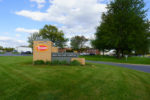
Report: Tyson Foods Dumped 371M Pounds of Waste into U.S. Waters Over 5 Years
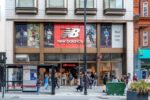
How New Balance Has Weathered Years of Supply Chain Disruptions

How Transportation Collaboration Drives More Effective Deliveries
Digital edition.
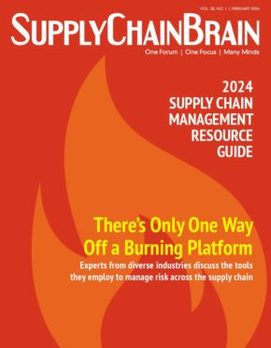
2024 Supply Chain Management Resource Guide: There's Only One Way Off a Burning Platform
Case studies, recycled tagging fasteners: small changes make a big impact.

Enhancing High-Value Electronics Shipment Security with Tive's Real-Time Tracking

Moving Robots Site-to-Site
Jll finds perfect warehouse location, leading to $15m grant for startup, robots speed fulfillment to help apparel company scale for growth.

IMAGES
VIDEO
COMMENTS
Learn how Zara, the fast fashion pioneer, achieved success with its unique strategy and supply chain management. Read the case study on ResearchGate.
Case Study: Zara's Supply Chain Success Story. Zara is a Spanish fashion clothing manufacturer and retailer, formed in the 1970's It is known that only two weeks are required for Zara to complete the development and shipment of a new product to its stores, which outweighs the average of fashion industry of six months, thanks to the ...
A web search on "Zara supply chain" will yield many results; this case study is based on information from some of those results listed below: The World's Most Valuable Brands - #41 Zara A ranking and brief profile of the 100 most valuable and recognized brand name companies - Forbes, 2020
Over the past two decades, annual net sales growth has often exceeded 10 per cent, reaching €26.1bn in 2018. A net profit margin of 10 to 14 per cent has been the envy of mass-market rivals. Two ...
1. INTRODUCTION. This thesis examines the European apparel industry with a case study of the Spanish specialty apparel chain, Zara, as an example of excellence in supply chain practices. This research on the European apparel industry emphasizes the economic and supply chain aspects of Zara's operation.
Zara's supply chain strategy is a valuable case study for businesses across industries. We have summarized the key takeaways and lessons that can be learned from Zara's success, including the importance of agility, responsiveness, and customer-centricity in supply chain management.
What Business Is Zara In? ZARA's Supply chain Management PracticesThis case study describes the Zara, a prosperous fast fashion manufacturer and retailer, no...
The result is a superresponsive supply chain exquisitely tailored to Zara's business model. Zara can design, produce, and deliver a new garment to its 600-plus stores worldwide in a mere 15 days.
Quick response to Demand - Zara follows a pull model in their inventory and supply chain management. They create up to 1000 designs every month based on store sales and current trends. ... 7 Rules of Fashion Supply Chain (Zara Case Study) Fashion industry is one of the most primitive form of supply chain management and its practices have been ...
Manufacturing In-House. One pillar of Zara's supply chain strategy that keeps things moving quickly is investing in in-house production processes. These can allow for greater flexibility and better oversight, reducing the risk of errors, delays, and inefficiencies. To achieve this, Zara does much of its production in-house.
In this case study, ProTalent Digital explores the success of fashion retailer Zara. From their innovative supply chain strategy to their ability to quickly ...
The key to Zara's ability to establish an agile Supply Chain rests on the following unique approaches: Procurement Methodology: Zara's Procurement team doesn't work on the number of finished clothes but on the quantity of raw materials needed to manufacture the clothes. This helps reduce waste, as you can re-use fabric but not resell a ...
Zara is a privately held multinational clothing retail chain with a focus on fast fashion. It was founded by Amancio Ortega in 1975 and it's the largest company of the Inditex group. Amancio Ortega was Inditex's Chairman until 2011 and Zara's CEO until 2005. The current CEO of Zara is Óscar García Maceiras and Marta Ortega Pérez ...
Keywords Supply chain management, Agile supply chain, Zara case study analysis Paper type Case Study Analysis Introduction It is becoming clear that the changed conditions in the global marketplace demand a much more agile response from the organizations and their partners in the supply chain. The period when production was moved overseas, so ...
Zara's success story shows the strength of its operations. Its cross-functional operations strategy, coupled with its vertically integrated supply chain, enables mass production under push control, leading to well-managed inventories, lower markdowns, higher profitability, and value creation for shareholders in the short and long term.
Zara, an international fashion retailer based in Spain, has integrated artificial intelligence (AI) into various aspects of its business operations to enhance efficiency, responsiveness, and customer engagement. Unlike many competitors, Zara's use of AI is not limited to consumer behavior analytics but extends throughout its supply chain and inventory management systems.
This Case Study has the objective of study Zara's strategies, from their supply chain until their marketing and communication strategies, and the strategy in the physical stores versus at the online store. Then the study will focus on the consumer: their behavior according to the different generations and the brand perception according to them.
Purpose - The purpose of this paper is to assess and document the key aspects in Zara's success by identifing current gaps, and to provide direction for future research efforts. Design/methodology/approach - Zara's case studies and literature published from 2001 to 2010 was reviewed. Findings - The review summarizes significant aspects of Zara success, many of which at least partially ...
Here's a quick breakdown of how it works: 1. Zara picks the season's hottest trends and must-haves and sets out to create the copies quickly. 2. Feedback is received in-store from customers ...
Two of these leaders are Maersk, a provider of transportation and logistics services, and Tive, a global leader in supply chain and logistics visibility technology. Both organizations felt that the potential value of tracking insights into general cargo was too important to overlook.